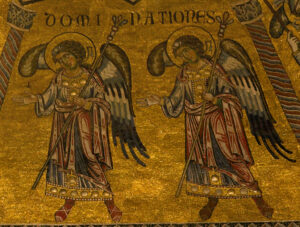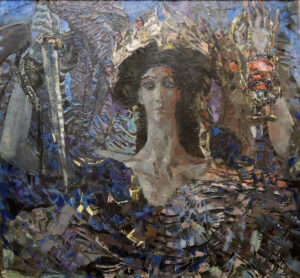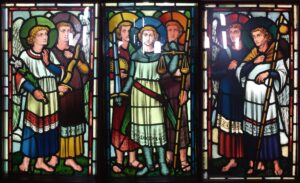Featured image: Virtues in the Florence Baptistry. Sailko, CC BY 3.0, via Wikimedia Commons.
Key Takeaways
- Angels of Miracles: The Virtues are responsible for enacting divine miracles and maintaining the cosmic order.
- Mediators of Divine Power: Positioned in the middle triad of angels, the Virtues channel God’s energy into the natural world.
- Guardians of Nature: They ensure the harmony of creation by overseeing natural processes and sustaining balance.
- Symbols of Strength: The Virtues embody divine strength and inspire moral courage and perseverance in believers.
- Universal Archetypes: Similar beings in other cultures highlight humanity’s shared longing for divine order and intervention.
- Modern Relevance: The Virtues remain significant as metaphors for hope, resilience, and environmental stewardship.
- Inspiration for Faith: They remind us of the miraculous in both extraordinary acts and the rhythms of daily life.
In Christian mythology, the Virtues stand as one of the nine choirs of angels, uniquely tasked with channeling divine power into the natural world. Known as the “Angels of Miracles,” they serve as essential intermediaries between heaven and earth, ensuring the steady flow of divine energy. From their role in miraculous healings to their connection with the balance of creation, the Virtues embody a fascinating intersection of spiritual and material realms.
To understand the Virtues, we must place them within the broader framework of the angelic hierarchy. This system, outlined most famously by Pseudo-Dionysius the Areopagite in his 5th–6th century treatise The Celestial Hierarchy, organizes angels into three triads of three orders each. Each triad fulfills specific divine tasks, with the Virtues positioned in the middle triad alongside the Dominions and Powers. This central placement highlights their intermediary function, bridging the contemplative roles of the upper choirs (Seraphim, Cherubim, and Thrones) with the hands-on duties of the lower choirs (Principalities, Archangels, and Angels).
The Virtues are best known for their two primary responsibilities: working miracles and maintaining the natural order of the cosmos. Their name, derived from the Latin virtus (meaning “strength” or “power”), reflects their close association with divine energy and their ability to channel it into the material world. As agents of God’s will, they perform supernatural acts, harmonize nature’s forces, and safeguard the universe’s balance in accordance with divine wisdom.
Throughout Christian tradition, the Virtues have also been revered as symbols of moral and spiritual strength. Their celestial mission of executing miracles mirrors the virtues that believers are called to cultivate in their lives: faith, hope, perseverance, and charity. By aligning with these qualities, individuals emulate the divine order that the Virtues so faithfully protect.
Table of Contents
The Role of the Virtues in the Angelic Hierarchy
The Virtues occupy a pivotal role in the angelic hierarchy, as intermediaries who bridge the spiritual and material worlds. Positioned within the middle triad, they are uniquely suited to translate divine will into action. While the upper triad focuses on contemplation of God and the lower triad attends to humanity’s needs, the middle triad, including the Virtues, works to sustain creation by governing cosmic forces and mediating divine energy.
Key Responsibilities of the Virtues
Performing Miracles
The Virtues are the miracle-workers of the angelic hierarchy, enacting God’s will through supernatural phenomena. Biblical miracles such as the parting of the Red Sea (Exodus 14:21-31), Elijah calling fire from heaven (1 Kings 18:36-38), or Christ calming the storm (Mark 4:35-41) illustrate their role as agents of divine intervention. While these acts are ultimately attributed to God or Christ, the Virtues are believed to be the angels who carry out these miraculous deeds behind the scenes.

Sustaining Cosmic Harmony
In addition to facilitating miracles, the Virtues are tasked with maintaining the natural order. From regulating the seasons to stabilizing the elements, their work reflects the Christian belief in a divinely structured universe. As stewards of creation, they ensure that God’s providence is continually enacted through the balance and harmony of the natural world.
Mediating Divine Will
The Virtues act as conduits of divine energy, translating the contemplative wisdom of the upper angelic triads into practical action. This mediating role places them in a critical position, ensuring that the divine plan is both sustained and fulfilled within creation.
The Virtues as Embodiments of Strength
The name “Virtues” speaks to their association with power, strength, and divine might. They represent God’s active force in the world, manifesting His omnipotence through acts of grace and intervention. In Christian theology, their strength also serves as an allegory for moral courage, reminding believers of the virtues they are called to embody in their lives.
Connecting Heaven and Earth
The Virtues’ position within the middle triad reflects their unique role as mediators. They form a bridge between the divine contemplation of the Seraphim and Cherubim and the earthly missions of the Principalities and Archangels. By harmonizing the spiritual and material realms, the Virtues ensure that creation remains aligned with God’s will.
Responsibilities and Symbolism of the Virtues
The Virtues not only fulfill essential tasks within the celestial hierarchy but also carry deep symbolic meaning. Their association with light, balance, and divine energy has made them enduring symbols of faith and strength in Christian thought.
Miracle-Working Angels
The Virtues’ role as facilitators of miracles emphasizes God’s active involvement in creation. From healing the sick to controlling natural forces, their miraculous deeds affirm divine sovereignty and inspire awe among believers.
Guardians of Natural Order
In their stewardship of creation, the Virtues sustain the rhythm of the universe, ensuring the proper functioning of nature. Their guardianship reflects God’s wisdom in crafting a cosmos that is both beautiful and orderly.
Symbolism in Art and Literature
Throughout Christian history, the Virtues have been depicted as luminous beings surrounded by symbols of creation, such as stars, suns, or plants. Their radiant imagery underscores their role as channels of divine light and power.
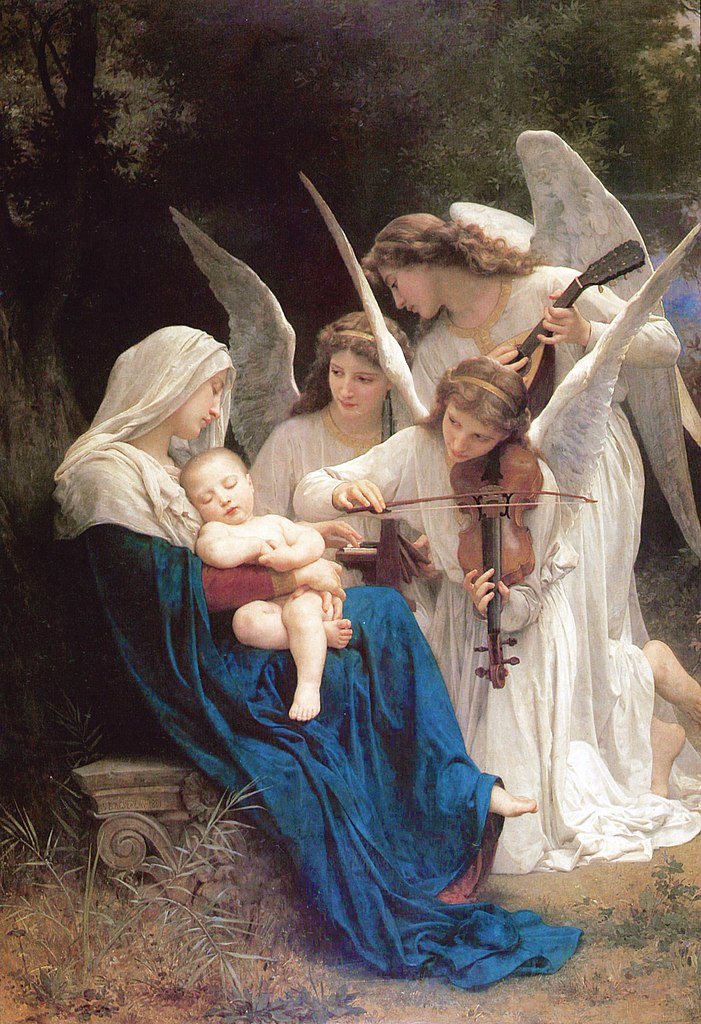
Scriptural and Apocryphal References
Although the Virtues are not explicitly named in the Bible, their presence can be inferred through references to angelic powers and divine interventions. Apocryphal texts, such as the Book of Enoch and the Testament of Solomon, further illuminate their functions as miracle-workers and cosmic stewards.
Biblical Allusions
- Colossians 1:16: “For in Him all things were created: things in heaven and on earth, visible and invisible, whether thrones or powers or rulers or authorities.”
This verse hints at a celestial hierarchy in which angelic beings, including the Virtues, govern creation. - Ephesians 6:12: “Our struggle is not against flesh and blood, but against rulers, authorities, and powers in the heavenly realms.”
This reference to “powers” reflects the Virtues’ role in opposing chaos and preserving divine order.
Comparative Mythology: Parallels in Other Cultures
The Virtues find parallels in many cultural traditions, underscoring universal themes of divine mediation and cosmic harmony.
- Greek Daemons: Intermediary spirits who balance divine and human realms.
- Zoroastrian Yazatas: Guardians of natural forces, much like the Virtues’ stewardship of creation.
- Hindu Devas: Radiant beings governing nature, echoing the Virtues’ connection to cosmic order.
- Norse Valkyries: Figures who mediate between divine will and mortal life.
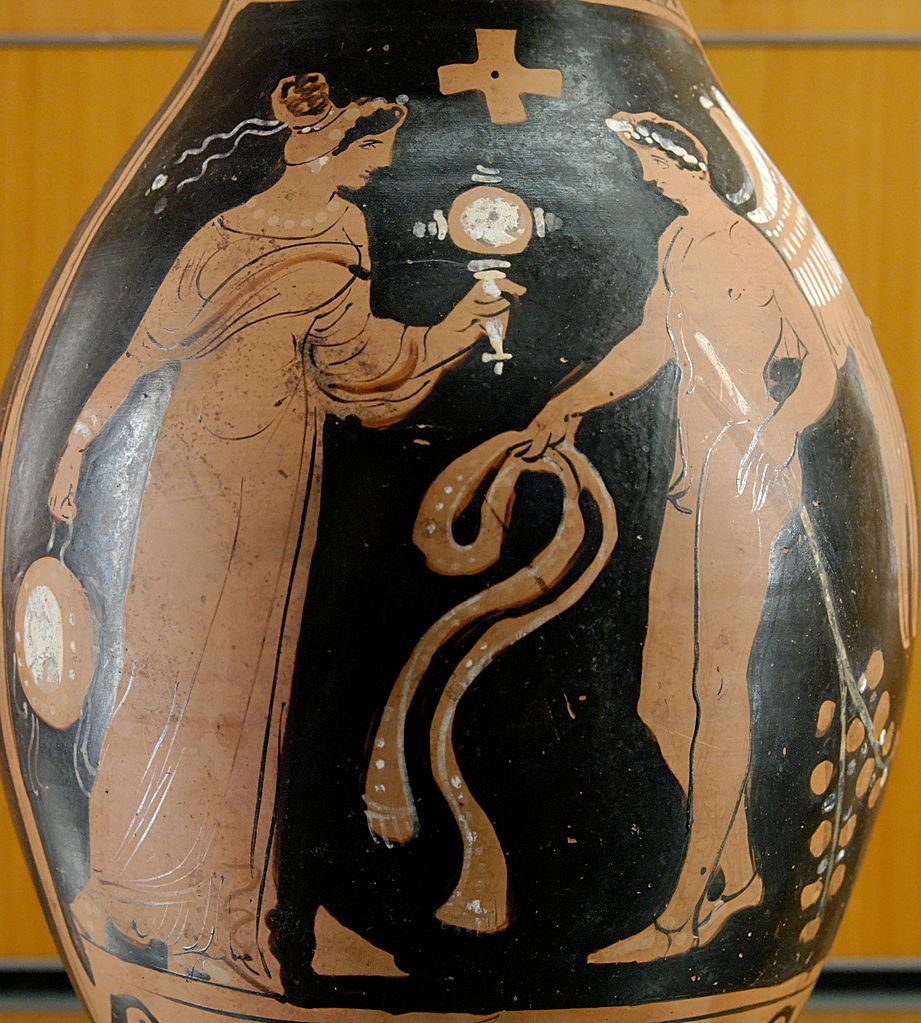
Modern Interpretations of the Virtues
In contemporary spirituality and culture, the Virtues have been reimagined as archetypes of strength, hope, and moral excellence.
- In Christianity: They continue to inspire prayers for miracles and ecological stewardship.
- In Popular Culture: Angelic figures modeled on the Virtues appear in films, literature, and media, symbolizing divine intervention.
- In Secular Thought: The Virtues are metaphorical for inner resilience and the human pursuit of balance and harmony.
Conclusion: The Enduring Relevance of the Virtues
The Virtues remind us of the miracles that sustain not only extraordinary moments but also the rhythms of daily life. As guardians of natural order, agents of divine power, and symbols of moral strength, they offer timeless insights into the Christian vision of a harmonious universe. Whether through theological study, cultural exploration, or personal reflection, the Virtues inspire us to see the divine at work within creation—and within ourselves.


